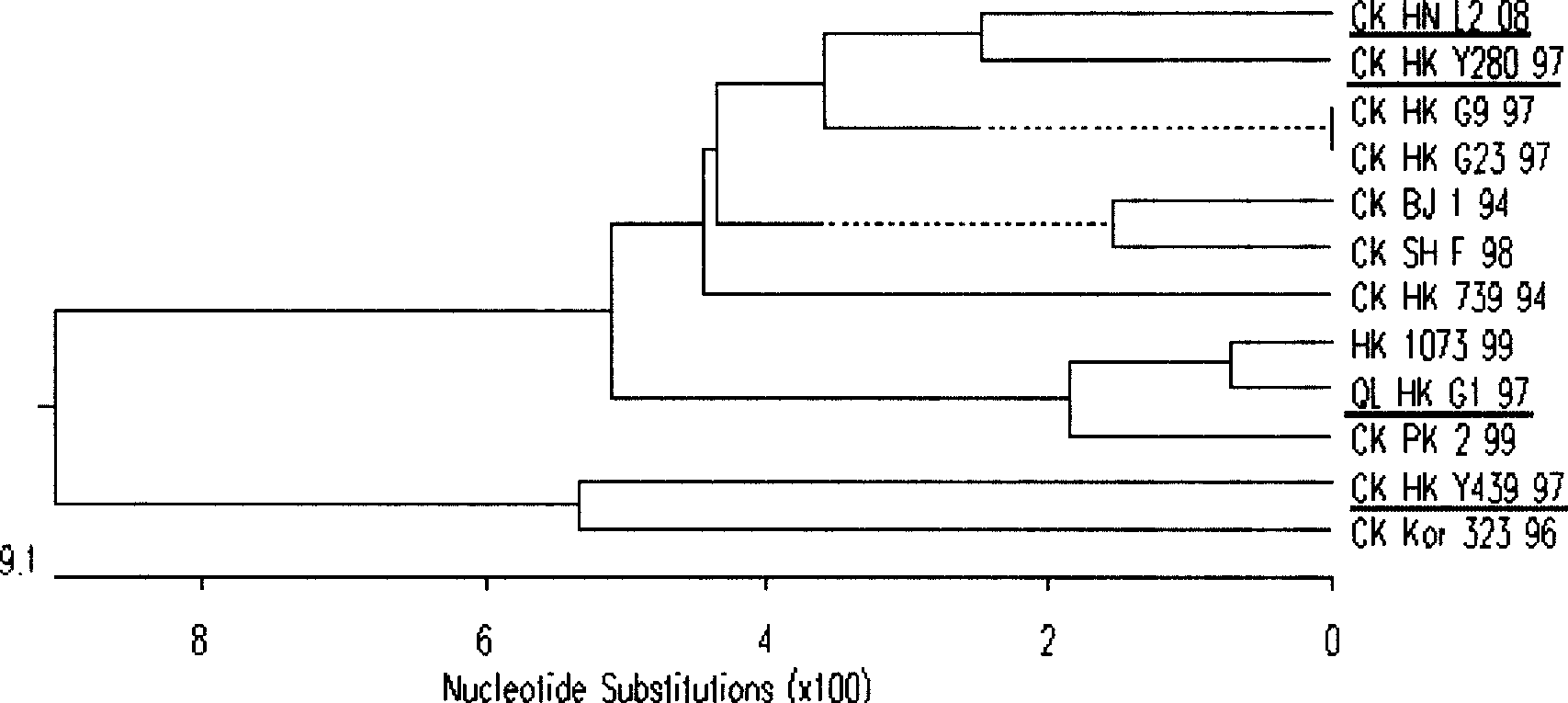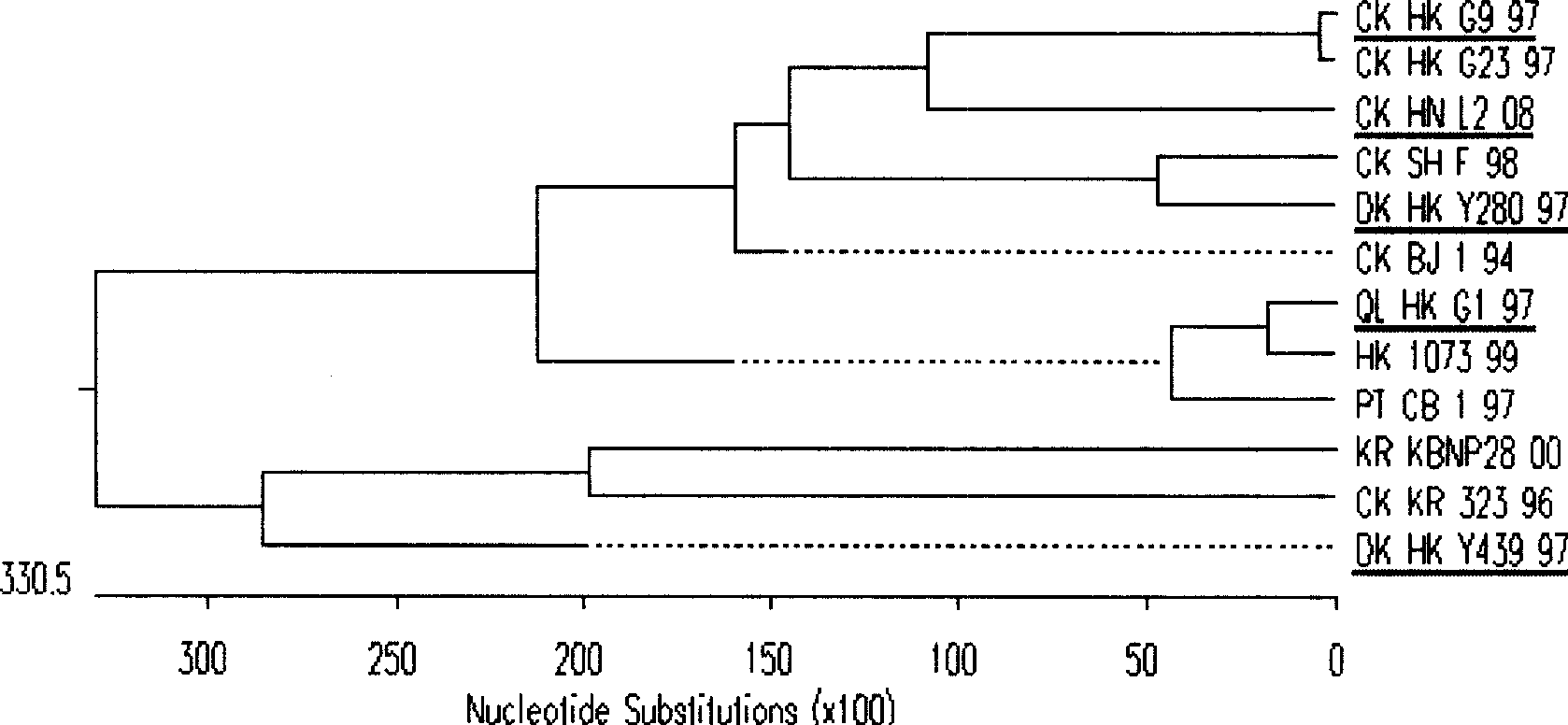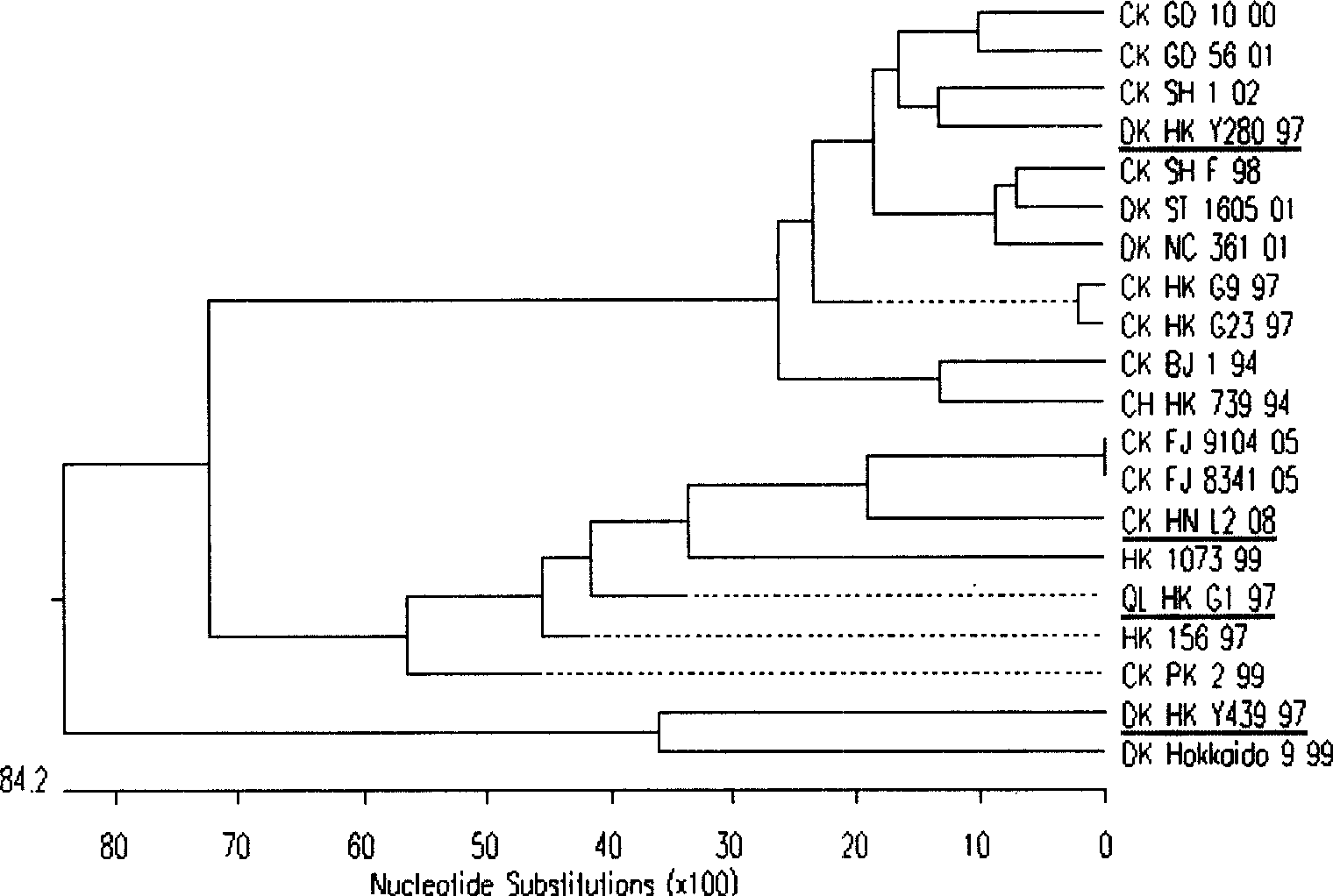Separation identification and purification process for chicken source H9N2 avian influenza virus strain and uses thereof
A technology of avian influenza virus and strains, applied in the field of animal virology, can solve problems such as egg production decline of laying hens, impact on poultry production performance, chicken flocks prone to secondary respiratory diseases, etc.
- Summary
- Abstract
- Description
- Claims
- Application Information
AI Technical Summary
Problems solved by technology
Method used
Image
Examples
Embodiment 1
[0026] Virus isolation and identification
[0027] A recombinant chicken source H9N2 avian influenza virus strain A / Chicken / Henan / L2 / 2008 (H9N2), the isolation and identification methods of the virus are as follows:
[0028] 1. Treatment of disease materials and inoculation of chicken embryo allantoic cavity
[0029] Take the internal organs (liver, kidney, spleen, etc.) of the diseased chicken and add sterilized saline to grind into a homogenate, freeze and thaw 3 times, centrifuge at 8000 revolutions per minute (rpm) for 10 minutes, discard the upper layer of fat, and absorb the middle liquid . Add penicillin and streptomycin and treat at 4°C for 1 hour, centrifuge again at 8000 rpm for 10 minutes, take the supernatant and inoculate 11-day-old SPF chicken embryos through the allantoic cavity, 0.2ml / piece, and culture them in an incubator for 72 hours. Observe twice a day, discard the contaminated embryos within 24 hours, and collect the allantoic fluid of the remaining chi...
Embodiment 2
[0039] Viral HA antigenicity analysis
[0040] experimental method:
[0041] 1. Preparation of H9 single-factor serum
[0042] Eleven isolated strains of H9N2 subtype AIV and A / Chicken / Henan / L2 / 2008 involved in the present invention were used to prepare oil emulsion inactivated vaccines respectively. The one-month-old SPF chickens were immunized with the above vaccines, and raised in an isolated feeder to prepare single-factor serum. A total of two immunizations were performed with an interval of 2 weeks. Blood was collected 14 days after the second immunization, and positive serum was prepared respectively.
[0043] 2. Crossover HI test
[0044] Using the above-mentioned 12 strains of viruses as antigens, 4 units of viruses were prepared respectively, and the cross-HI test was carried out with the above-mentioned 12 kinds of single-factor sera to detect the reactivity of the HA antigens of these H9N2 viruses. Experiments were repeated three times. The average value of th...
Embodiment 3
[0057] Determination of the whole genome sequence of the virus
[0058] experimental method:
[0059] 1. Synthesis of RT-PCR primers
[0060] Referring to the published H9 subtype AIV sequence data, RT-PCR primers for 8 gene segments (PB2, PB1, PA, HA, NA, NP, M, NS) of the AIV genome were designed and synthesized (see Table 2).
[0061] Table 2 Primer sequences for the amplification of gene fragments of avian influenza virus
[0062]
[0063] 2. Extraction of viral RNA
[0064] Toxic chick embryo allantoic fluid was used as the material for RNA extraction, and the operation was performed according to the instructions of the Trizol kit (Invitragen).
[0065] 3. RT-PCR of each gene
[0066] Using TAKARA's PrimeScript TM One Step RT-PCR Kit, the reaction system is 50ul: RNase FreedH 2 O 30.5 μl, 10×Buffer 5 μl, Enhancer Solution 1 μl, dNTP Mixture 2 μl, RNase Inhibitor 1 μl, PrimeScript TM RTase 0.5 μl, EX Taq TM HS 1 μl, RNA sample 6 μl, upstream and downstream prime...
PUM
 Login to View More
Login to View More Abstract
Description
Claims
Application Information
 Login to View More
Login to View More - R&D
- Intellectual Property
- Life Sciences
- Materials
- Tech Scout
- Unparalleled Data Quality
- Higher Quality Content
- 60% Fewer Hallucinations
Browse by: Latest US Patents, China's latest patents, Technical Efficacy Thesaurus, Application Domain, Technology Topic, Popular Technical Reports.
© 2025 PatSnap. All rights reserved.Legal|Privacy policy|Modern Slavery Act Transparency Statement|Sitemap|About US| Contact US: help@patsnap.com



